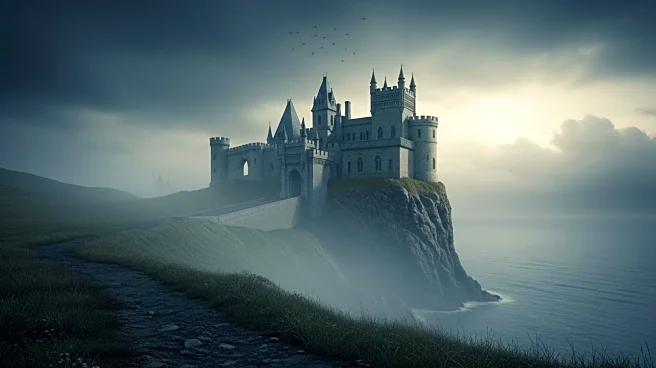What is the story about?
What's Happening?
Two authors, Sheldon Costa and Hiron Ennes, are releasing novels that feature protagonists engaged in monster hunting, drawing parallels to Herman Melville's Moby-Dick. Costa's debut novel, The Great Work, follows Gentle Montgomery and his nephew Kitt as they pursue a giant salamander in the 19th-century Pacific Northwest. This creature is believed to cause nightmares and madness, and Gentle hopes to use its blood to resurrect his deceased friend. Ennes's The Works of Vermin introduces Guy Moulène, who takes on extermination jobs to keep his sister out of debt, including hunting a giant centipede in the city of Tiliard. Both authors use monster hunting as a metaphor for deeper American themes, such as violence and the perception of the natural world as something to be conquered.
Why It's Important?
These novels highlight the enduring appeal of monster hunting as a narrative device, allowing authors to explore complex themes within American culture. Costa and Ennes use their stories to delve into issues like the unattainable American dream and the destructive nature of debt. By framing these themes within the context of monster hunting, the authors provide a unique lens through which readers can examine societal challenges. This approach not only entertains but also prompts reflection on the broader implications of these themes in contemporary society.
What's Next?
As these novels are released, they may spark discussions among readers and critics about the use of allegory in fiction to address societal issues. The reception of these works could influence future literary trends, encouraging more authors to explore similar themes through fantastical narratives. Additionally, the success of these books might lead to adaptations in other media, such as film or television, further expanding their impact.
Beyond the Headlines
The use of monster hunting as a metaphor in these novels raises questions about the ethical and cultural dimensions of how society confronts its fears and challenges. By portraying monsters as symbols of larger societal issues, the authors invite readers to consider the ways in which these 'monsters' manifest in real life and how they can be addressed. This approach may lead to a deeper understanding of the cultural narratives that shape American identity.
AI Generated Content
Do you find this article useful?














